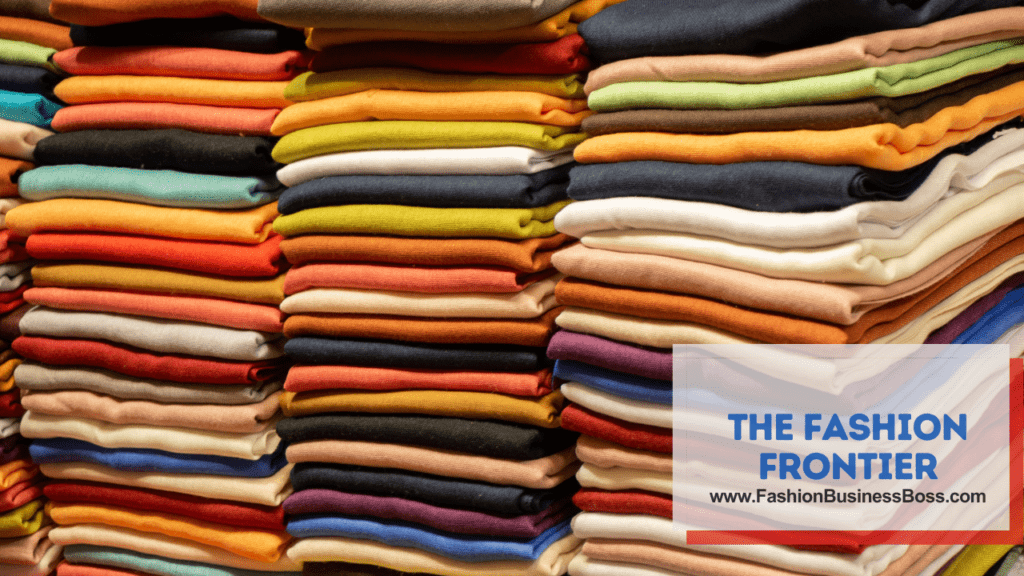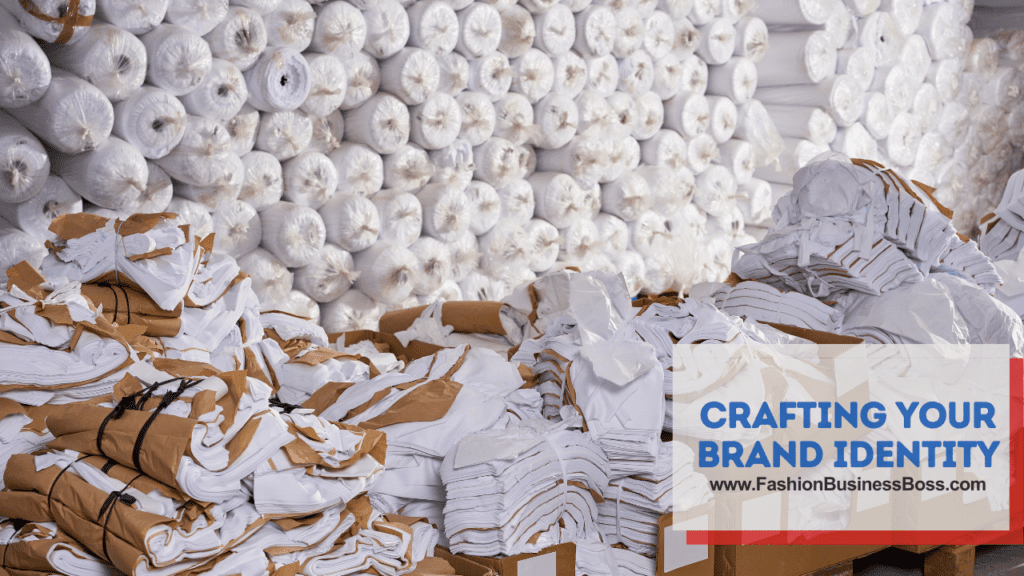Are you passionate about fashion and dream of starting your own clothing manufacturing business? Or maybe you see a great opportunity in the apparel industry? In either case, you’ve come to the right place.
To start a clothing manufacturing business, begin with market research, create a solid business plan, secure funding, find suppliers, and set up efficient production processes. Also consider factors like location, quality control, and marketing to ensure an effective start and operation.
This article will walk you through every step of the journey, from initial concept to operation.
Chapter 1: The Fashion Frontier

Well, first things first, if you’re crazy about clothes and have a knack for style, this could be your ticket to turning that passion into a paycheck. Imagine getting paid to do what you love – designing and making cool clothes.
And, it’s not just about the money. It’s about expressing your creativity. You can take those fashion ideas swirling around in your head and bring them to life. You get to be the Picasso of the wardrobe, creating unique pieces that people will wear.
Plus, here’s the real kicker: the fashion world is always hungry for something new. Trends change faster than you can say “runway,” and people are always on the lookout for the next big thing. That’s where you come in. You can ride the wave of constant demand for fresh styles and hot trends.
Starting a clothing manufacturing business isn’t just about sewing and stitching – it’s about turning your passion into profit, expressing your artistic side, and diving into an industry that’s always hungry for the next fashion sensation.
Read more about: No Money, No Problem: How to Kickstart Your Clothing Brand?
Chapter 2: Market Research – Know Your Audience
Before you dive into drawing sketches or placing fabric orders, there’s something crucial you need to do – get to know your target audience. Who’s gonna wear your awesome creations?
First off, you gotta figure out your niche. That means deciding which slice of the market pie you want to grab. Are you aiming for men, women, kids, or maybe something super specific like athletic wear or eco-friendly fashion?
Next up, it’s all about doing some detective work. Check out what your competition is up to. What’s hot, what’s not? Keep your finger on the pulse of market trends. And hey, while you’re at it, see if there are any gaps in the market – places where people want something but can’t find it. That’s your chance to swoop in and save the day with your designs!
But wait, there’s more. You’ll want to create some make-believe customers, aka customer personas. Imagine you’re building a character in a video game – give them a name, a personality, and even a fashion sense. This helps you understand what your audience likes, how they shop, and where to find them.
So, before you start sewing, make sure you know who you’re sewing for. Figure out your niche, do some market sleuthing, and create those customer personas. It’s like laying the foundation for your fashion empire!
Chapter 3: Building a Solid Business Plan
Executive Summary
This is like the teaser trailer for your business movie. Keep it short and sweet. Tell people what your business is all about, why you’re doing it, and what your big dreams are. It’s like the mission statement for your clothing empire.
Market Analysis
Think of this as your fashion detective work. You’ll need to dig deep into your target market. Who are your customers? What do they like? Who’s your competition? What’s trending in the fashion world? Knowing these things is like having a secret map of where the treasure is buried.
Financial Projections
Now, let’s talk money. You’ll need to do some math here. Estimate how much it’ll cost to get your business off the ground – that’s your startup costs. Then, figure out how much money you’ll spend to keep things running and how much you plan to make in the first few years. It’s like predicting the future but with numbers.
Marketing Strategy
Time to put on your marketing hat. How are you gonna tell the world about your amazing clothes? Will you use social media, ads, or maybe some old-school flyers? Your marketing strategy is like the battle plan for winning the hearts (and wallets) of your customers.
Production Plan
This is where you lay out how you’re gonna bring your fashion creations to life. What equipment do you need? Where will you get your materials? How many clothes can you make in a day? It’s like having a recipe for your secret sauce.
Chapter 4: Securing the Funds
Personal Savings
First things first, look in your piggy bank. Your savings can be your starting point. It’s like using your treasure chest to kickstart your dream. Of course, it’s a big decision, so make sure you’re comfortable dipping into your savings.
Business Loans
Now, if your piggy bank isn’t quite fat enough, it’s time to explore the world of business loans. Banks and financial institutions can be your best pals here. They offer loans tailored for folks like you who want to start a clothing biz. Do some digging, compare rates, and pick the one that suits your plans.
Investors

Ever heard the saying, “It takes money to make money”? Well, investors are the money-makers in this story. These are folks who believe in your clothing line and want to be part of your progress. They’ll invest their money in your business in exchange for a piece of the pie. Finding investors is like pitching your blockbuster movie idea – you’ve got to make it sound irresistible.
Remember, there’s no one-size-fits-all answer here. It’s all about what works best for you and your business dreams. Whether you’re diving into your savings, knocking on the bank’s door, or wooing investors, the goal is the same: get that cash to turn your clothing manufacturing dream into a reality. It might feel like a puzzle, but each piece of funding you secure brings you one step closer to stitching your great story.
Read more about: Must-Have Runway Brand Clothing Pieces for the Fashion-Forward
Chapter 5: Finding Reliable Suppliers
Fabric Suppliers
These folks are like the lifeline of your clothing manufacturing. You’ll want to find fabric suppliers who are as solid as a rock and won’t leave you hanging. Look for the ones who offer the materials you need, whether it’s silky satin or rugged denim, and at prices that won’t burn a hole in your wallet. It’s all about building a partnership where you both win.
Manufacturing Equipment
Picture this: You’re in a race, and your machinery is your trusty steed. To win, you need the best horse in town. That’s why it’s crucial to invest in top-notch manufacturing equipment. It’s like having a superhero on your side, ensuring your production is as smooth as butter. High-quality machinery means efficient production, fewer hiccups, and more clothing hitting the racks.
Logistics and Distribution
Once you’ve got your materials and your machines, it’s time to get things moving. You’ll need a smart plan for moving your raw materials in and your finished products out. Think of it as setting up your clothing transportation system. The smoother it runs, the faster your fashion can get into the hands of eager customers.
Chapter 6: Setting Up Production
Location
Think of it like picking a house – location matters. You want a spot that’s not too far from your suppliers, so you can get those materials flowing in without a hitch. And being close to distribution centers is a bonus because it keeps the clothes moving out fast.
Quality Control
Now, here’s a golden rule – quality is king. You don’t want customers returning stuff because it fell apart after one wash, right? So, tighten the screws on quality control. Think of it as having an eagle eye watching over every piece that goes out the door. Make sure your clothes are consistently top-notch.
Skilled Workforce
It’s like assembling a superhero team. You want skilled workers who know their way around clothing manufacturing. They’re the ones who’ll turn rolls of fabric into stunning outfits. Look for experienced folks who can sew, cut, and stitch with finesse.
Production Flow
Imagine a river flowing smoothly – that’s what you want your production to be like. Minimize waste, maximize efficiency – that’s the name of the game. Develop a plan that makes every step from design to finished product as smooth as butter. It’s like having a secret recipe for improvement.
Chapter 7: Crafting Your Brand Identity
Online Presence

Think of your website and social media as your fashion store and billboard. You want a professional website where people can browse and buy your clothes online. And don’t forget social media – it’s like your fashion show runway. Use platforms like Instagram and Facebook to show off your latest designs and connect with potential customers.
Read more about: Modern Fashion Hype: The Rise of Designing Your Own Clothing Online
Networking
Building relationships is a big deal. Connect with fashion influencers who can spread the word about your brand. Talk to retailers who might want to carry your clothes in their stores. And never underestimate the power of connecting with your customers directly. It’s like making friends in the fashion world.
Branding
Your brand is like your fashion signature. It’s what sets you apart. Develop a unique brand identity, like a logo, a catchy slogan, or a distinct style that resonates with your target customers. It’s what makes people remember you in the sea of fashion choices.
Chapter 8: Scaling and Growth
Diversify Product Line
Imagine you’ve been selling awesome T-shirts, and people love them. Now, it’s time to give them more. Think about adding new clothing items like pants, dresses, or even cool accessories like hats or bags. It’s like offering a bigger menu in your fashion restaurant – more options for your customers to love.
Distribution Channels
Now that you’ve got your clothes ready, you need to get them to the people who want them. It’s like delivering pizzas – you need different ways to get them to hungry customers. Explore options like selling in retail stores, setting up your online store, or using e-commerce platforms like Amazon or Etsy. The more places your clothes are available, the easier it is for customers to find them.
Global Expansion
Picture this – your clothes are a hit in your hometown, but why stop there? If it makes sense for your business, consider going global. Explore international markets where people would love to wear your designs. It’s like taking your fashion show on a world tour – spreading your style far and wide.
Chapter 9: Overcoming Challenges
Supply Chain Disruptions
Imagine your supply chain as a highway, and you’re driving a big delivery truck. Sometimes, there are roadblocks, like a sudden traffic jam. In the world of clothing manufacturing, these roadblocks can be supply chain disruptions.
To tackle this, have backup suppliers in your contact list. It’s like having a detour option when your main route is blocked. Also, keep some extra materials in stock (safety stock) so you can keep your machines humming even when your regular suppliers hit a snag.
Changing Fashion Trends
Think of fashion trends like ocean waves – they keep on changing. What was hot last year might not be so trendy now. To stay afloat, you need to ride those waves. Keep your eyes on the fashion horizon.
Read magazines, follow influencers, and check out what’s trending online. Then, adapt your designs accordingly. It’s like adjusting your sails to catch the wind – you’ll stay on course no matter how the trends change.
Quality Control
Quality is your fashion brand’s bread and butter. If your clothes don’t meet the mark, customers will head to the next store. Think of quality control like a master chef’s taste test. You need to make sure every outfit is top-notch. Invest in training for your team so they know what perfection looks like. Set up quality control processes, like inspecting every piece, so you catch any flaws before your clothes hit the racks. It’s like being the fashion police but in a good way!
Chapter 10: Financial Management

Managing the money side of your clothing manufacturing business is a bit like taking care of a garden. You’ve got to water it just right, make sure it gets enough sun, and keep those pesky weeds at bay. In business lingo, this is what we call financial management, and it’s crucial for the long-term growth of your venture.
Read more about: Mastering the Threads: Must-Have Equipment for Aspiring Fashion Moguls!
Budgeting
Imagine you’re planning a big road trip. You’d probably make a list of all your expenses, right? Well, that’s what budgeting is all about. Create a detailed budget for your clothing business. List every expense, from the cost of materials to salaries and rent.
This budget is like your trusty map, showing you where your money needs to go. And here’s the important part – stick to it! It’s like staying on course during your road trip and not getting lost along the way.
Cash Flow Management
Think of cash flow as the lifeblood of your business. Just like your body needs blood to function, your business needs cash to keep things running smoothly. You need enough cash coming in to cover all your operational expenses – like paying your employees, buying materials, and keeping the lights on.
If the cash flow slows down, it’s like a traffic jam on your journey. To manage this, keep a close eye on your finances. Make sure you’re not spending more than you’re earning. It’s like balancing your household budget, making sure you have enough to cover bills and other expenses.
Financial Records
Imagine your financial records as a diary of your business’s life. It’s like taking photos of your garden as it grows over time. Keeping accurate financial records is not just for tax purposes; it’s also your compass for making smart decisions.
You can track your income, expenses, and profits. You’ll know where your business stands financially at any given moment. And when it comes time to file taxes, you’ll have all the necessary information right at your fingertips.
Chapter 11: Sustainability and Ethical Practices
Eco-Friendly Materials
Think of it this way: the fashion industry can be pretty tough on the environment. But you can make a difference by choosing sustainable materials for your clothing. Look for options like organic cotton, recycled fabrics, or even innovative materials like bamboo or hemp.
These materials are like the superheroes of sustainability, reducing the environmental impact of your clothing line. And here’s a bonus – customers who care about the planet will love your eco-friendly approach.
Minimize Waste in Production
Picture your production process as a kitchen. When you cook, you don’t want to waste food, right? Well, in clothing manufacturing, you shouldn’t waste materials either. Make it a point to minimize waste in your production. Use every bit of fabric efficiently, and recycle or repurpose scraps. It’s like making sure there are no leftovers in your clothing kitchen – you use everything wisely.
Fair Labor Practices
Imagine this: you’re working long hours, but you’re not getting paid fairly, and your workplace isn’t safe. That’s not a good scene, right? So, when it comes to your employees, ensure they’re treated right. Pay them fair wages and provide safe working conditions. It’s like creating a fair and safe environment in your clothing factory, where everyone feels respected and valued.
Transparency

Think of transparency as being honest and open with your customers. Let them know about your commitment to sustainability and ethical practices. Share your journey, the steps you’re taking, and the challenges you’re facing. It’s like having an open conversation with your friends – when you’re transparent, trust grows. And when customers trust you, they’re more likely to support your business.
By offering eco-friendly materials, minimizing waste, ensuring fair labor practices, and being transparent, you’re not just selling clothes; you’re selling a story that customers can get behind. It’s a win-win situation – good for your business and good for the world. Make sustainability and ethics a part of your clothing manufacturing journey, and you’ll not only create beautiful fashion but also a beautiful impact.
Read more about: Pricing Insights: How Much Do Clothing Manufacturers Charge?
Summary
Starting a clothing manufacturing business demands careful planning, dedication, and adaptability. With thorough research, a solid business plan, and effective strategies, you can turn your passion for fashion into a thriving and sustainable business.
Keep in mind that great achievement may not happen overnight, but with persistence and the right approach, you can achieve your goals in the clothing manufacturing industry. Now, it’s time to take that first step toward realizing your dream.
Frequently Asked Questions

1. How much money do I need to start a clothing manufacturing business?
To start a clothing manufacturing business, you’ll need varying amounts based on your scale and location, but a rough estimate is around $50,000 to $200,000 for a small to medium-sized operation.
2. Where can I find reliable fabric suppliers for my clothing line?
You can source fabric suppliers through trade shows, online directories, or by networking with other industry professionals. Research and quality checks are crucial before making a decision.
3. How long does it take to see a profit in clothing manufacturing?
The timeline for profitability can vary widely, but it often takes at least a year or more. Growth depends on factors like market demand, marketing efforts, and efficient operations.
To learn more about starting your own clothing business, check out my startup documents here.
The information provided by FashionBusinessBoss.com (“The Site”) is for general informational purposes only. All information on the Site is provided in good faith, however, we make no representation or warranty of any kind, express or implied, regarding the accuracy, adequacy, validity, reliability, availability or completeness of any information on the Site. Under no circumstance shall we have any liability to you for any loss or damage of any kind incurred as a result of the use of the Site or Reliance on any information provided on the Site. Your use of the Site and your reliance on any information on the Site is solely at your own risk. This blog post is for educational purposes only and does not constitute legal advice. Please consult a legal expert to address your specific needs. Terms and Conditions. (https://fashionbusinessboss.com/terms-and-conditions/)

Meet Shawn Chun: Entrepreneur and Fashion Business Fan.
I’m a happy individual who happens to be an entrepreneur. I have owned several types of businesses in my life from a coffee shop to an import and export business to an online review business plus a few more and now I create online resources for those interested in starting new ventures. It’s demanding work but I love it. I do it for those passionate about their business and their goals. That’s why when I meet a designer or boutique owner at a craft fair, farmers market, retail location or anywhere else I see myself. I know how hard the struggle is to retain clients, find good employees and keep the business growing all while trying to stay competitive.
That’s why I created Fashion Business Boss: I want to help fashion business owners like you build a thriving business that brings you endless joy and supports your ideal lifestyle.

